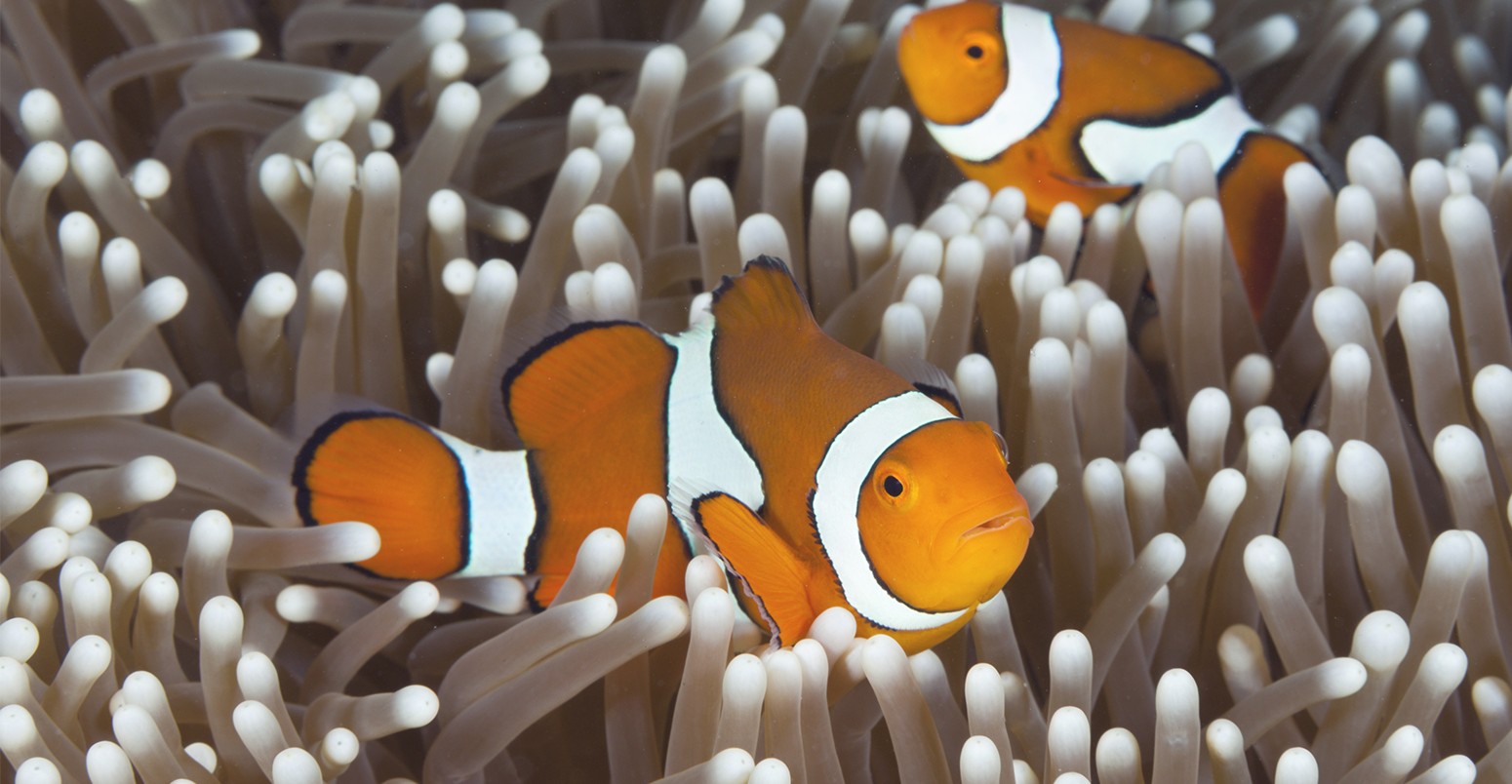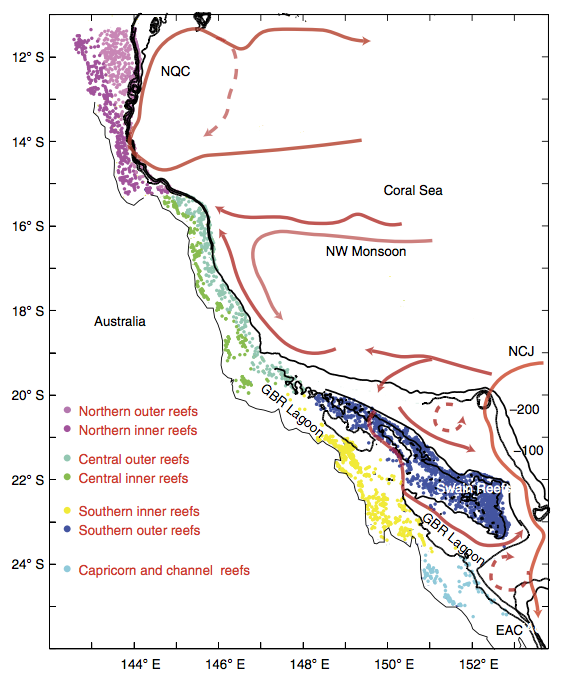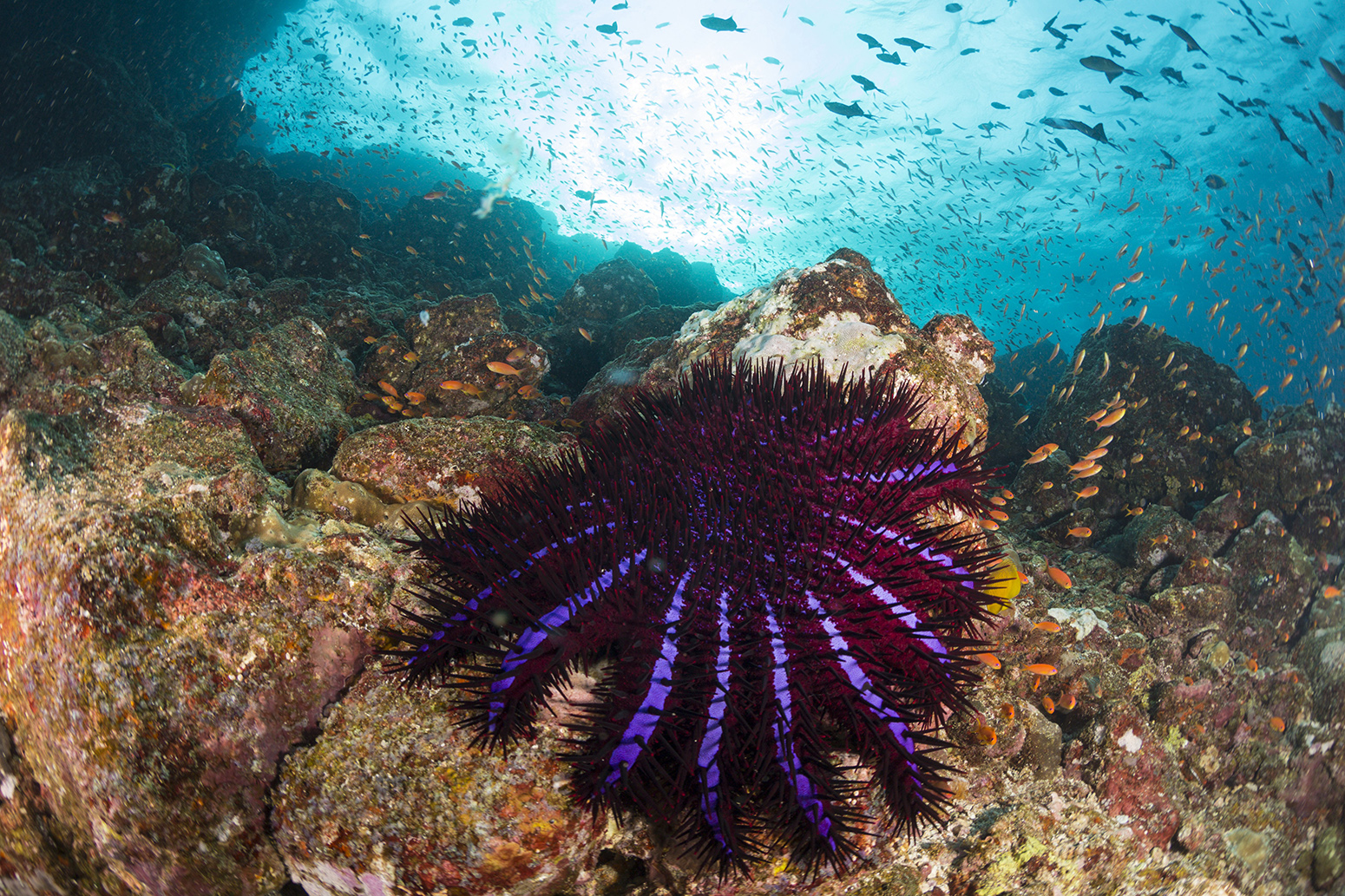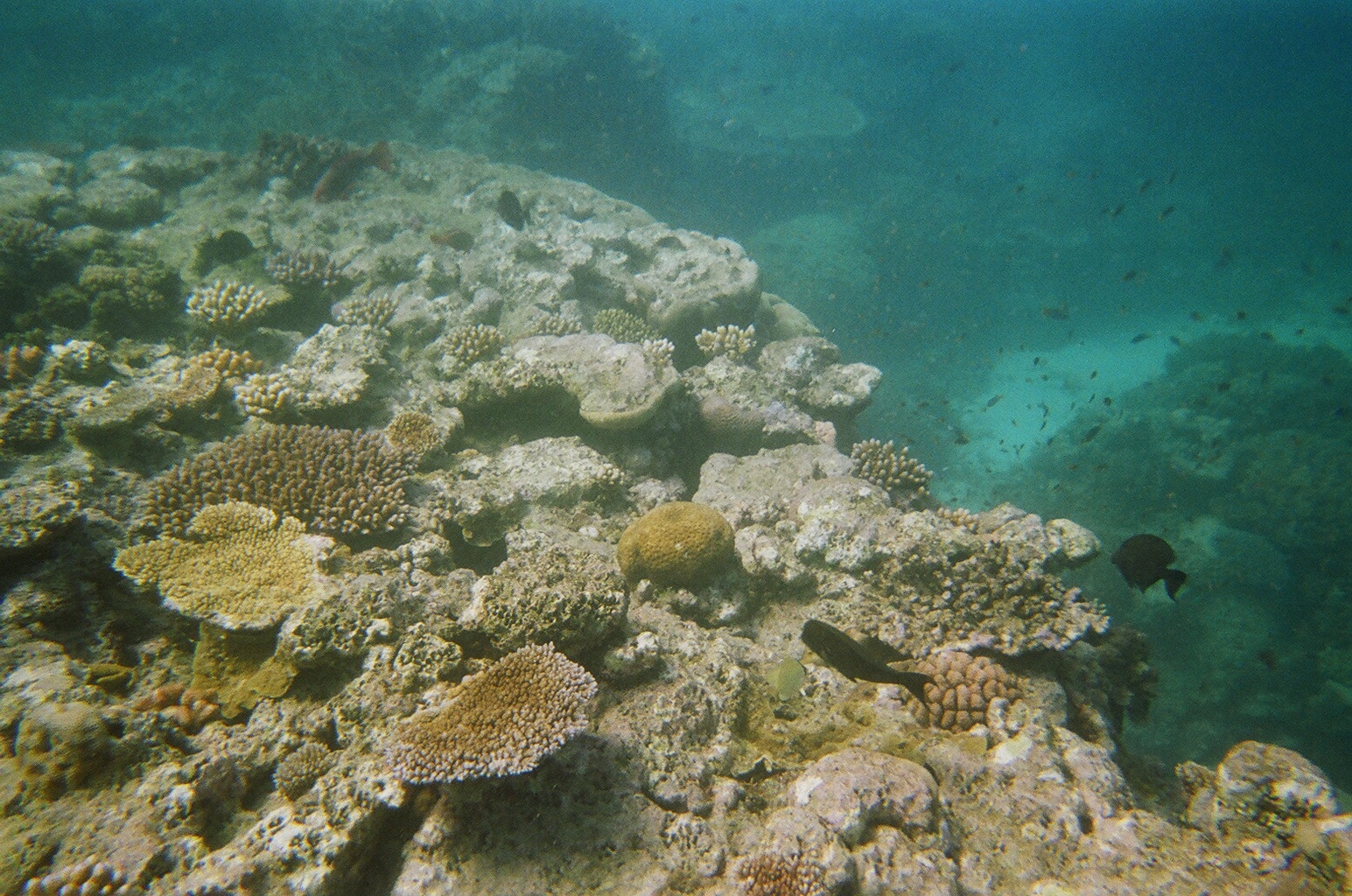
Ocean acidification: Decline of Great Barrier Reef likely to be worse than feared
Roz Pidcock
02.23.16Roz Pidcock
23.02.2016 | 4:01pmParts of the Great Barrier Reef are more vulnerable to ocean acidification than previously thought, according to new research published today in the journal Nature Communications.
The first-of-a-kind study of more than 3,000 coral reefs off the northeast coast of Australia reveals how some parts are already experiencing the kind of conditions scientists were predicting many decades from now.
This means the decline of the iconic ecosystem is likely to be steeper than scientists feared, say the team from the Commonwealth Scientific and Industrial Research Organisation (CSIRO) in Australia and the King Abdullah University of Science and Technology in Saudi Arabia.
Building blocks
Since humans began industrialising, the oceans have absorbed about 30% of the extra carbon dioxide (CO2) in the atmosphere. This is changing the chemistry of the seawater.
With a pH of around 8, seawater is naturally alkaline. But, as the oceans absorb CO2, it turns to carbonic acid. This doesn’t immediately make the oceans acidic, but it is causing them to become gradually less alkaline. Since the direction of change is towards the acid end of the scale, the process is known as ocean acidification.
Scientists estimate the ocean’s pH has dropped about 0.1 units since the start of the industrial revolution, from about 8.2 to 8.1.That might not sound like a lot, but the effects are already being felt in coral reefs around the world.
As more CO2 dissolves in the seawater, it becomes harder for corals and other organisms to build the hard structures that protect them. As long as seawater is saturated with a form of calcium carbonate known as aragonite, corals can grow their skeletons. But if levels drop too low, the skeletons begin to dissolve faster than they can be built.
The consequences of ocean acidification have been known for a while. A 2005 study found the shells of sea snails began to dissolve when they were exposed to seawater with low levels of aragonite. A 2009 study found the extent of coral-building in 69 reefs within the Great Barrier Reef complex had declined by 14% since 1990. Another paper estimates coral cover across the Great Barrier Reef is as low as 20-30%, a significant drop compared to the 1960s.
A new study just published in Nature shows how much ocean acidification is holding back coral growth in the southern part of the Great Barrier Reef. Corals in the One Tree Reef began building their skeletons faster once the scientists artificially restored the pH of the seawater to preindustrial levels over a period of 15 days. Dr Janice Lough from the Australian Institute of Marine Science and the Australian Research Council Centre of Excellence for Reef Studies at James Cook University explains in an accompanying News and Views article:
There are many more examples of the world’s coral reef systems under threat. But the new paper is the first to identify the individual reefs within the Great Barrier Reef – described as one of the seven natural wonders of the world – that are most at risk from acidifying oceans.

Living coral on the Great Barrier Reef. Red lines show the major oceanic surface currents. (NQC: North Queensland Current; EAC: East Australian current; NCJ: North Caledonia Jet.) Coloured dots are individual reefs, defined by the Great Barrier Reef Marine Park Authority. Source: Mongin et al., (2016).
A new approach
Scientists predict that if CO2 emissions stay as high as they are, the pH in the surface oceans could fall a further 0.2-0.4 units by the end of the century.
To understand what this means for coral reefs, scientists next need to know how much aragonite there is in the seawater where the corals are found. It’s a good indication of how resilient corals are likely to be, since those in waters with only just enough aragonite to sustain their skeletons will be the most vulnerable as the oceans acidify further. Where there’s a lot of aragonite in the water, on the other hand, those corals will be the most resilient to change.
But it’s impossible to measure aragonite saturation for every single reef in the Great Barrier ecosystem, today’s paper explains. One way scientists have approached this problem in the past is to use earth system models to simulate how rising CO2 is expected to lower aragonite saturation. But these models aren’t fine-scale enough to capture changes in individual reefs.
Instead, the authors of today’s paper employ a completely new approach. They took existing measurements at 22 sites around the inner Great Barrier Reef and combined them with a very fine-scale model of the surrounding water properties. Rather than taking a big picture view like previous studies, this allowed them to focus in on individual reefs for the first time.

Crown of thorns starfish (Acanthaster planci), 04 Aug 2014, Sumatra, Indonesia. © Michele Westmorland/Corbis.
Healthcheck
The biggest result from the study was that across the 3,581 individual reefs, the authors found a much greater difference in the amount of aragonite in seawater than they were expecting.
The difference between the highest and lowest values was almost 50% bigger than the observations alone suggest, and more than three times bigger than in the conventional models.
This higher-than-expected variation is down to the fact that different processes influencing aragonite saturation dominate to a greater or lesser extent in different parts of the reef, the paper explains. These processes include how the water circulates, the amount of biological activity and how much freshwater is delivered by nearby rivers, among other factors.
The scientists don’t think ocean acidification is the main driver of the differences in aragonite saturation from one part of the reef to another, explains Dr Mathieu Mongin, a coastal modeller at CSIRO and the lead author on the new study. He tells Carbon Brief:
Climate change by the mean of rising CO2 is not directly responsible for the current variability in aragonite saturation state. It is natural processes…that drive the variability.
But what the new study does show is that while ocean acidification is gradually driving down coral quality across the whole Great Barrier Reef, not all reefs start with the same bill of health.
In fact, the authors found aragonite saturation in some regions is already as low as scientists expect by the end of the century under a very high emissions scenario. In central parts of the reef, the paper explains, aragonite levels are already so low that coral skeletons are starting to dissolve faster than they’re being built – a situation that the scientists expect to expand north and south with time.
Identifying which areas are the most vulnerable to ocean acidification has “profound implications” for predicting the future of the Great Barrier Reef, explains Mongin.

The Great Barrier Reef. Credit: Jorge Láscar/Flickr.
Now that scientists know the “chemical status” of the entire reef system, he says, it’s clear that the point at which ocean acidification causes corals to switch from building their skeletons to seeing them dissolve is likely to be reached sooner than expected in some places, he says.
Prof Jean-Pierre Gattuso, research professor at the Institute for Sustainable Development and International Relations (IDDRI), who was not involved in the research, explains why the new study is very significant. He tells Carbon Brief:
Most of the long-term observations and model projections of future ocean acidification are available in the open ocean…Yet, the impacts of ocean acidification will be in the coastal zone which provides enormously valuable ecosystem services such as fisheries, aquaculture, coastal protection and recreation.
Gattuso’s own research suggests that even if countries limit global temperature rise to below 2C, as outlined in the recent Paris Agreement, some degree of damage looks unavoidable. He tells Carbon Brief:
We have shown that even the full implementation of the Paris Agreement will bear high risk for warm-water corals and coral reefs. Mitigation will not not enough and local managers will need to implement protection and adaptation measures.
Of course, ocean acidification isn’t the only pressure the Great Barrier Reef has to contend with, adds Mongin. Warmer water leading to coral bleaching, tropical storms, sea level rise, disease, pollution, fishing and invasive species, including the crown of thorns starfish, all cause stress to corals.
This bleak-sounding prognosis doesn’t allow for the possibility that corals could adapt to some extent, perhaps staving off some of the worst effects, says Mongin. But, as today’s paper explains, the signs suggest that even stringent cuts in emissions may now not be enough to avoid losing parts of Great Barrier Reef, and the vital ecosystems the corals support.
Main image: Clown Anemonefish, Amphiprion percula, Osprey Reef, Coral Sea, Australia, 20 Apr 2015.
Mongin, M. et al., (2016) The exposure of the Great Barrier Reef to ocean acidification. Nature Communications. doi: 10.1038/ncomms10732.
This article was updated on 21/04/2020 to correct a reference to a "42%" decline in coral building in the Great Barrier Reef. The 2009 study actually identified a 14.2% decline.
-
Ocean acidification: Decline of Great Barrier Reef likely to be worse than feared
-
Parts of the Great Barrier Reef are more vulnerable to ocean acidification than previously thought, says new research

